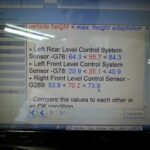VCDS, the powerful diagnostic software from Ross-Tech, allows you to access and modify the inner workings of your Volkswagen, Audi, Seat, or Skoda vehicle. But before you dive in, it’s crucial to understand the Ross Tech Vcds System Requirements. This article will outline everything you need to know to ensure a smooth and successful VCDS experience.
Essential Hardware and Software for Running VCDS
The primary requirement for running VCDS is a compatible Windows PC. While VCDS-Mobile offers some cross-platform functionality, it’s still in beta. For the most stable and feature-rich experience, stick with Windows.
Here’s a breakdown of the Ross Tech VCDS system requirements:
Operating System:
- Windows 7, 8.1, 10, or 11: These are the officially supported Windows versions. While VCDS might function on older systems like Windows XP or Vista, Ross-Tech no longer provides support or testing for these outdated operating systems. Windows RT and “S mode” are not supported.
- Windows on ARM: Supported only with HEX-NET and HEX-V2 interfaces. Surface tablets with Intel/AMD CPUs or newer ARM-based models running Windows 10/11 are compatible.
Hardware:
- Processor: A single-core Atom processor is no longer recommended. A more modern processor will ensure smooth operation of the software.
- RAM: At least 2GB of RAM is recommended for optimal performance.
- Screen Resolution: A minimum screen resolution of 800×600 is recommended.
- Interface: You’ll need a Ross-Tech interface, such as a HEX-V2 or HEX-NET, to connect your computer to your vehicle’s diagnostic port. The choice between a USB or Serial interface depends on your computer’s available ports. Modern computers generally favor USB interfaces.
- Serial Port (for older interfaces): If using an older serial interface, ensure your PC has a 9-pin male serial port (DB9). Many USB to Serial converters are not reliable for use with VCDS. Ross-Tech recommends converters with an FT232B or FT232R chipset configured correctly.
- Internet Access (for initial download and updates): You’ll need internet access to download the VCDS software and to install updates. Once installed, an internet connection is not required to use VCDS.
Additional Considerations:
- Laptop vs. Desktop: A laptop provides the most convenience due to its portability. If using a desktop PC, you might need an extension cable for the interface. Ross-Tech offers extension cables for both serial and USB interfaces. Using a quality power supply designed specifically for your laptop is crucial; avoid generic universal adapters.
- Virtualized Environments: Running Windows in a virtualized environment (like Virtual PC on a Mac) is not supported. Using Boot Camp on a Mac with an Intel processor is a viable alternative.
Ensuring Compatibility and Performance
To maximize your success with VCDS, consider these additional factors:
- Keep VCDS Updated: Regularly update your VCDS software to benefit from the latest features, bug fixes, and vehicle compatibility.
- Consult the Ross-Tech Website: Refer to the official Ross-Tech website for the most up-to-date system requirements and compatibility information. Their comprehensive FAQs and support documentation are invaluable resources.
Conclusion: Setting Yourself Up for Success with VCDS
Understanding the Ross Tech VCDS system requirements is the first step towards effectively utilizing this powerful diagnostic tool. By ensuring your hardware and software meet these requirements, you’ll be well-equipped to diagnose, troubleshoot, and customize your VW, Audi, Seat, or Skoda. Remember to consult the Ross-Tech website for the most accurate and up-to-date information.

